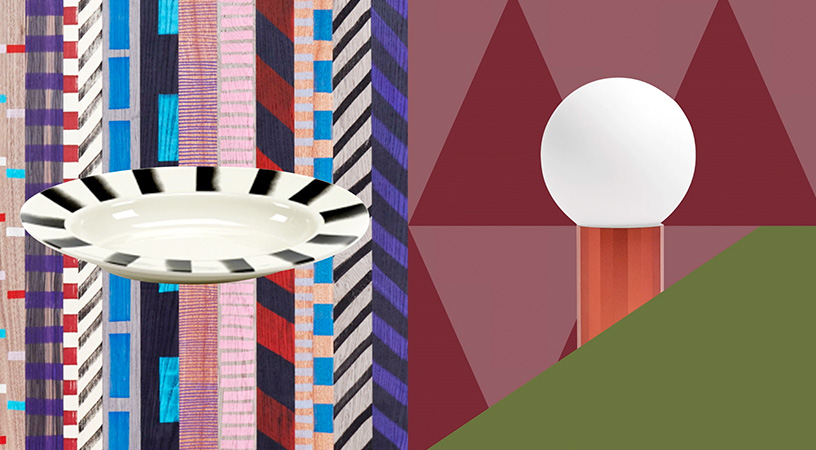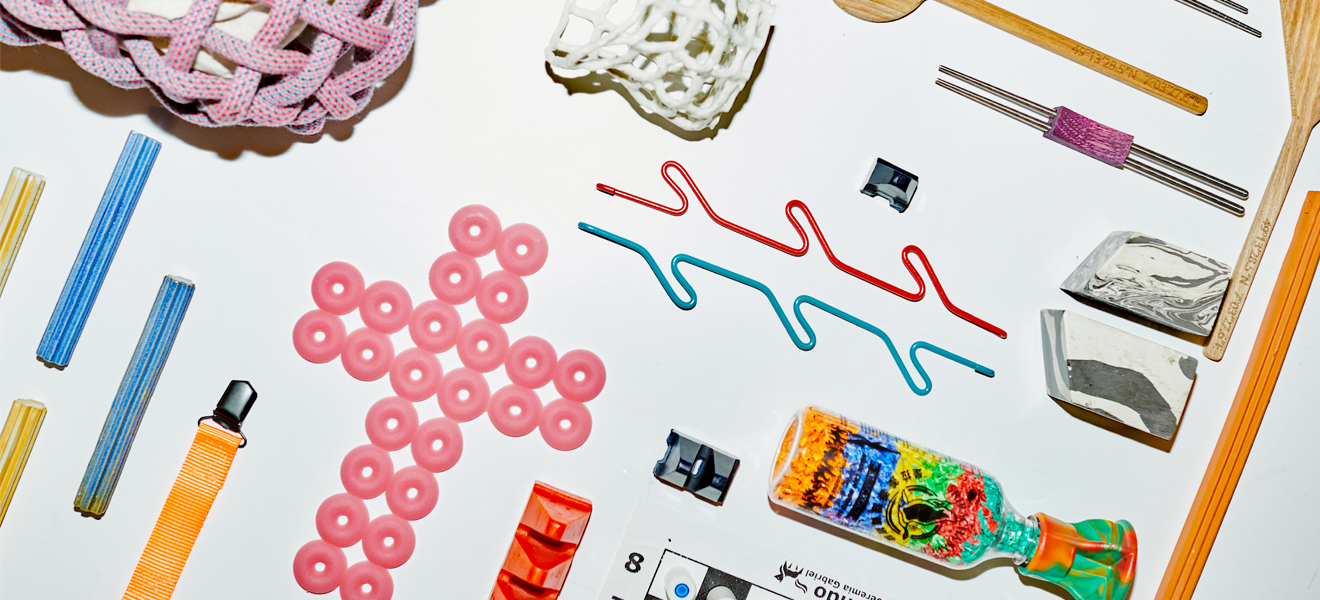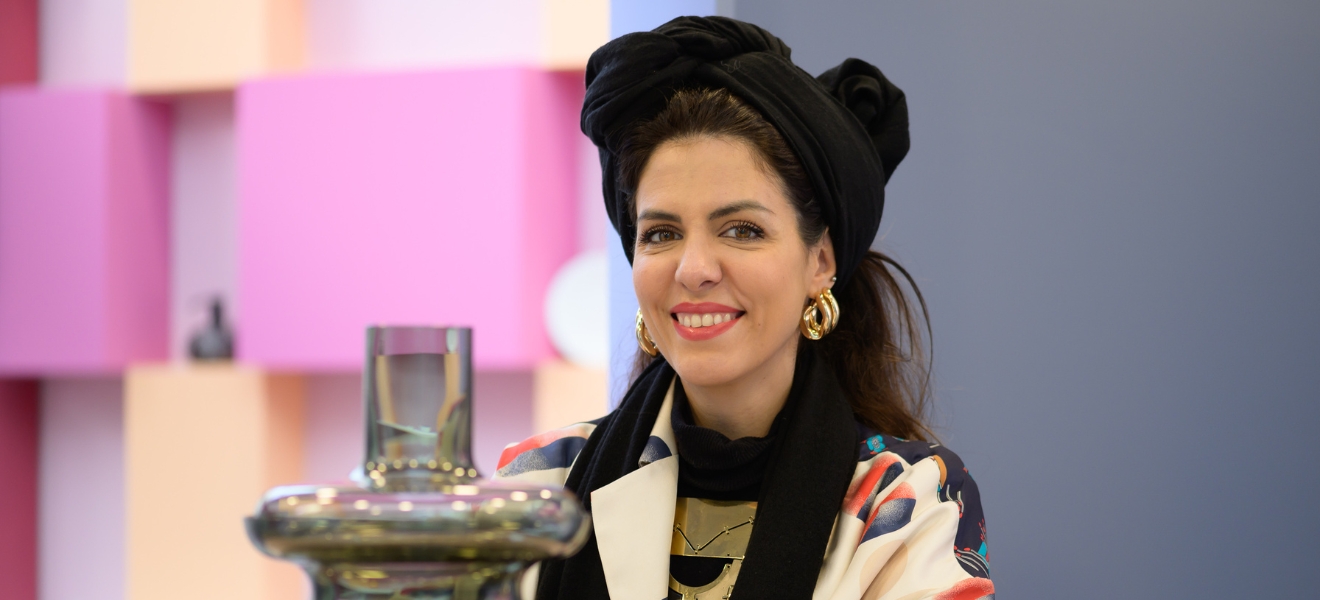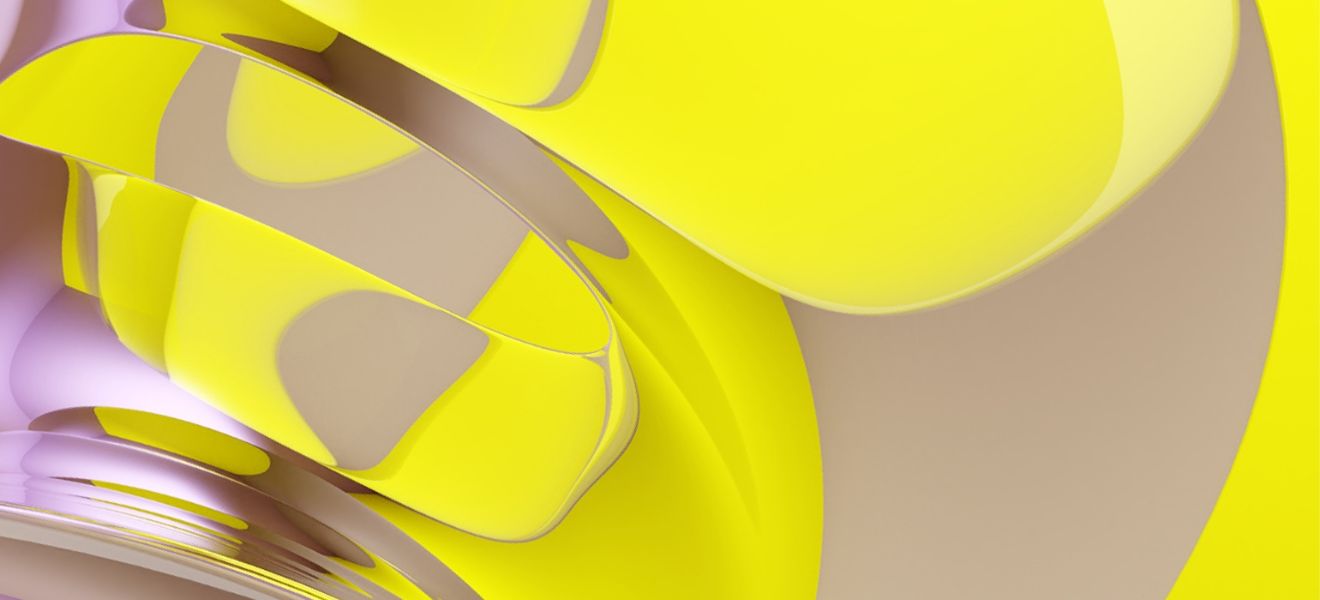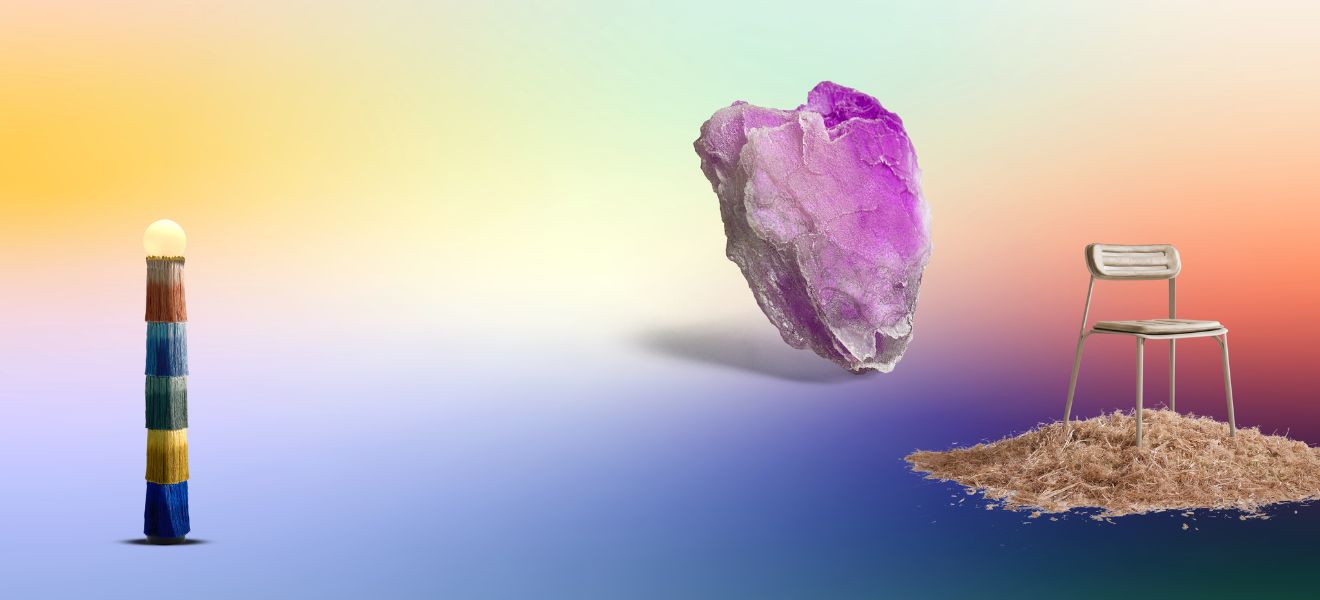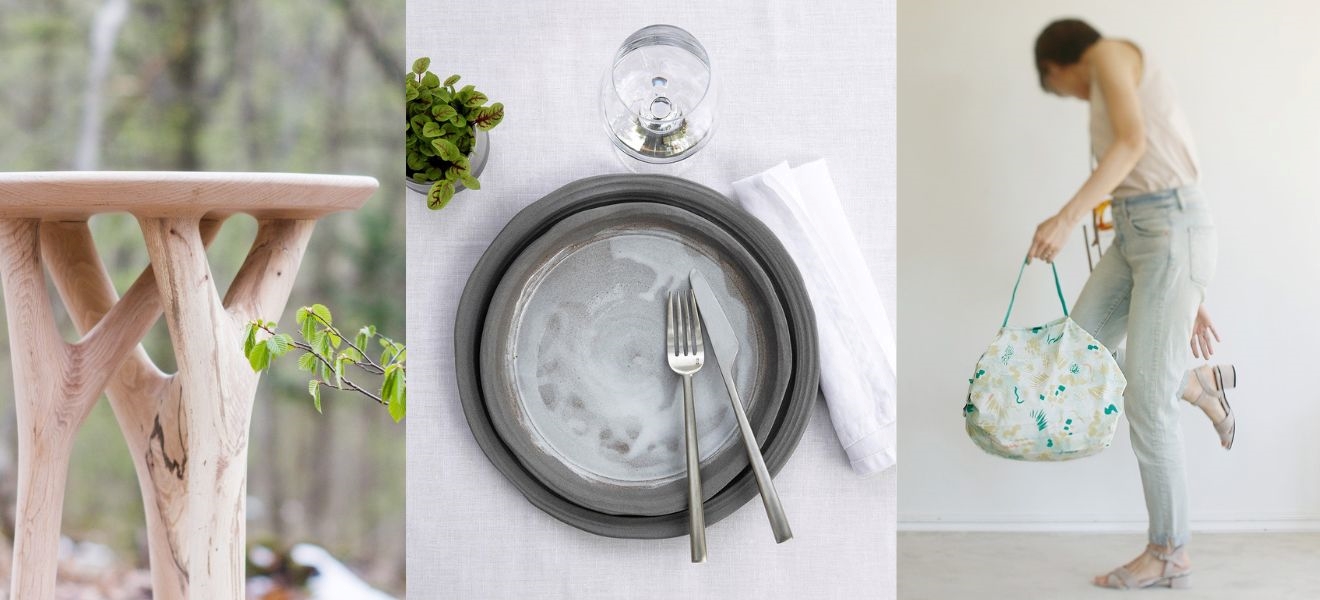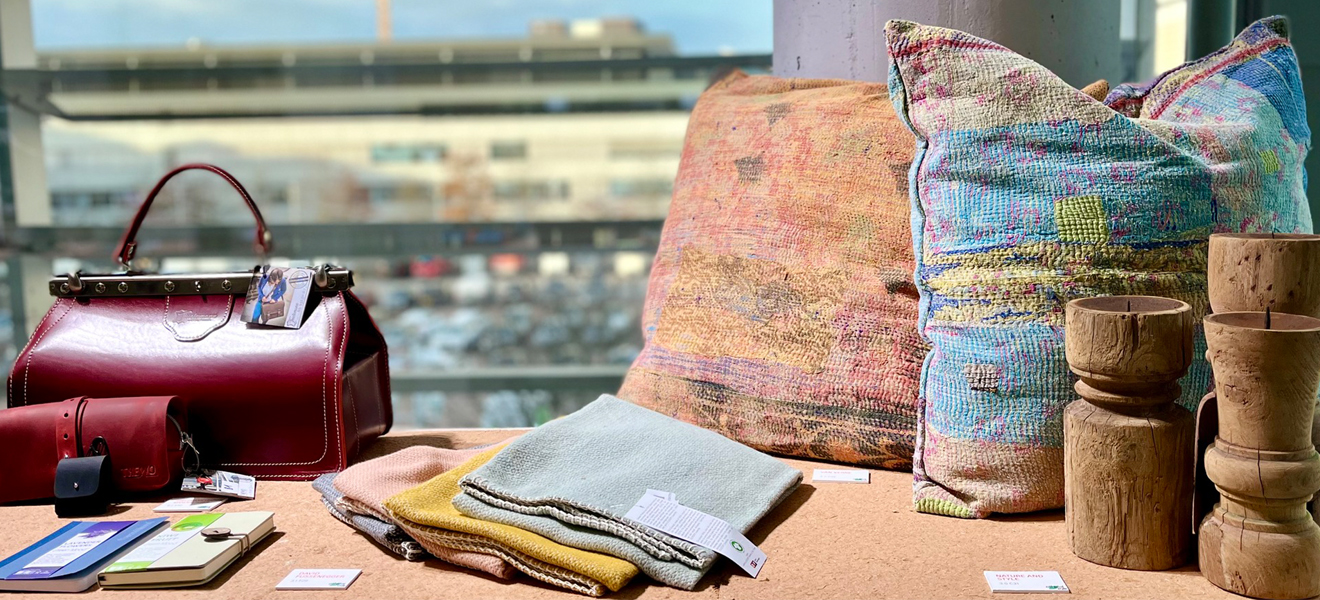How is it possible to sort through the thousands of ideas and instances that emerge worldwide and unearth the really important design trends? This is the mammoth task which Annetta Palmisano and Claudia Herke from Stilbüro bora.herke.palmisano undertake every year for Ambiente. They join forces with Berlin’s Cem Bora to analyse trends and ultimately produce a trend presentation complete with spatial installations. We met two of the trend scouts for an interview up above the city, to dive deep into their world of collecting, decoding and interpreting.
There’s a great view across Frankfurt from the 22nd floor of the Messe Torhaus building. It shows this metropolis in the best possible light. Our designers Annetta Palmisano and Claudia Herke keep watch all year round to gain an overview of trends and major directions in the consumer goods industry. They research and analyse all the finest styles, assess influences from art, architecture and fashion and distil the main themes to make a trend presentation which brings together the major sources of inspiration. The designers have identified three key trends for the new season. Their names indicate how natural, energetic and individual they are: Tasteful Residence. Quiet Surrounding. Joyfilled Ambience.
Your mood charts show deep colours, many shades of red, and soft, handcrafted materials that look just right for cosy nights in. Do these trends reflect a big demand for comfort and craft, for slow living?
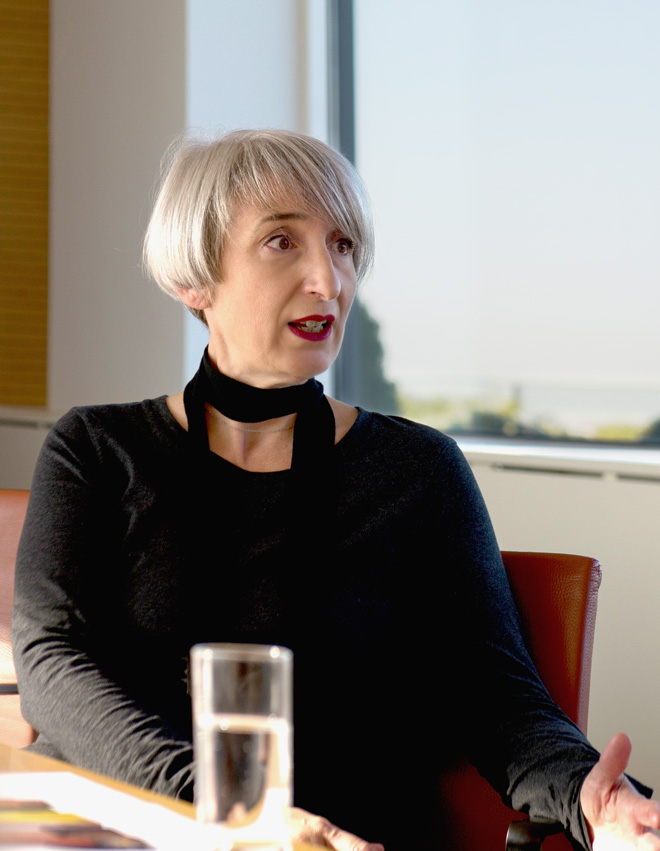

Annetta Palmisano: “Absolutely. Above all, they reflect people’s quest for connection, to be grounded. At the same time, the metatrend of digitisation is constantly creating new possibilities. We’ve established that high-tech processes are now easier to combine with traditional crafts, and that’s creating something new. Coloured glass objects and polished surfaces are examples of this. Something that’s been on the horizon for a while is now becoming clear – furniture, fabrics and accessories are awash with colour, giving a refined and luxurious look but also encouraging relaxation and balance.”
Claudia Herke: „The Tasteful Residence trend prominently features velours fabrics and other soft, substantial materials. Berry and dark petrol shades set the sensory tone. The core statement of the Quit Surrounding trend says “The best out of the simple”. Getting out into nature, finding silence and trusting your instincts. It involves good honest materials which don’t harm the environment, and maybe even a desire to turn your life around. For many interior designers, this type of wish translates into collections focused on sustainability. Hemp and linen are major players, as well as straw, clay and ceramics, which are often recycled. There are pioneering ideas and one of them aims at making children’s furniture from 100% recycled plastic toys. The ‘Joyfilled Ambience’ trend is full of enthusiasm, life, colour and expressive patterns. It’s driven by a will to self-determination and a stimulating policy of tolerance. You can be whatever you want to be.”
Annetta Palmisano: “Extreme perfection in craft work is key. It’s certainly the unifying theme for this trend, and new technologies form part of that. For instance, transmitting light through glass so you can produce spectacular designs without revealing your light source. Ten years ago it was already possible to manufacture great lamps using a 3D process. Now with the use of additive processes, anything goes, for instance making jewellery from real gold. It’s revolutionary, but still very expensive.”
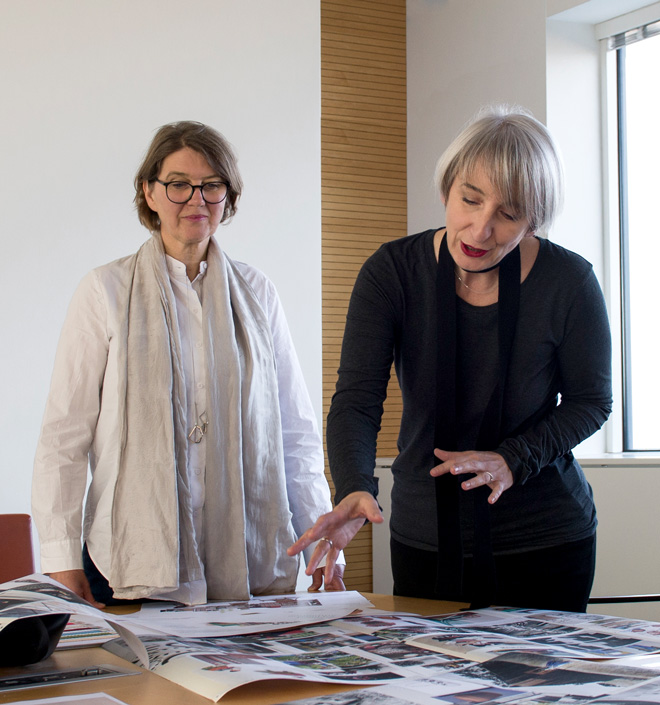
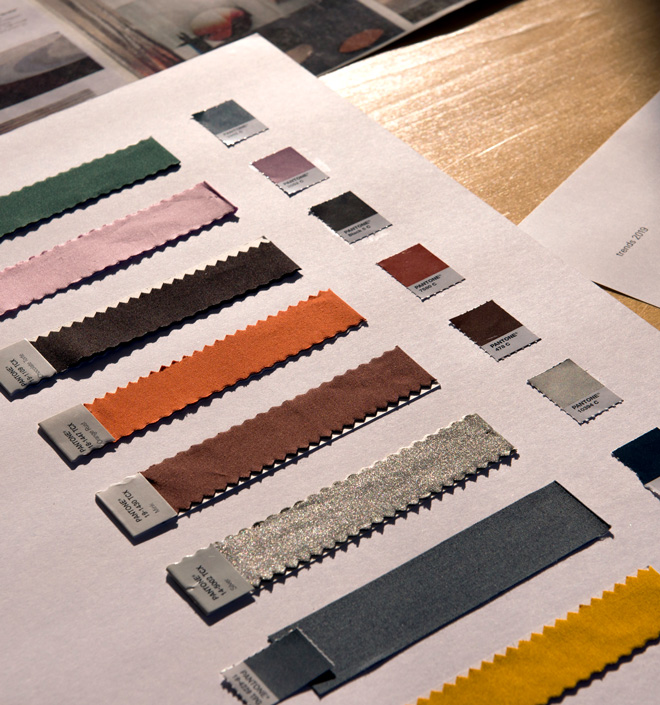
Tracking down trends means constantly observing the directions society is taking and the things consumers long for. Once the analysis is complete, trends will have been identified that reflect people’s short and longer-term needs.
Where do the trend experts find what they are looking for? We’re interested to see whether the latest haute couture shows in Paris and New York filter down into product design – perhaps with a revival in cord fabrics?
Annetta Palmisano: “Fashion is no longer quite as key to predicting trends in the consumer goods sector. Fashion is increasingly fast, and the trends there short-lived. We have a critical eye for areas where collections reflect an interdisciplinary trend. Nevertheless we perceive the meta interior theme of nature as omnipresent in fashion. That’s why a Paris haute couture label has installed an entire forest, and more recently set up a sandy beach, for fashion shows, while wide open landscapes and romantic courtyards often feature in print advertising. So yes: since most people see cord as rustic, natural and full of character, this would be a good time for it to feature in interiors too.”
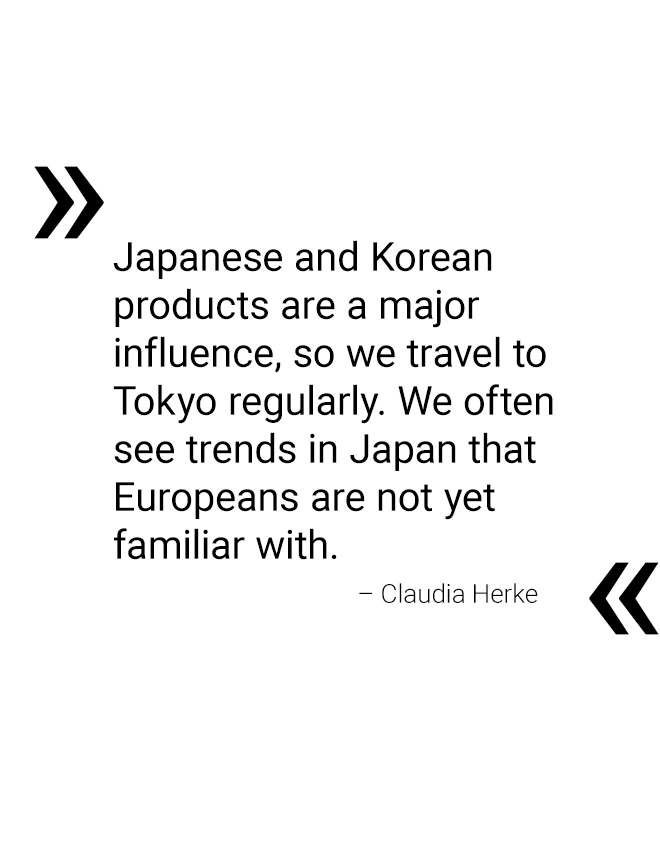

Claudia Herke: “Japanese and Korean products are a major influence, so we travel to Tokyo regularly. We value the Japanese market, and the Japanese value the German and European markets. We often see trends in Japan that Europeans are not yet familiar with. For example, internet cafes with cabins where you can relax or sleep. Much that is innovative in product design still comes from Scandinavia. We also monitor what comes out of the major design schools. The Design Academy Eindhoven in the Netherlands must be one of the best hotbeds of talent. We also keep an eye on what the big names in Germany bring out, including Offenbach product designer Sebastian Herkner, Stefan Diez in Munich and Konstantin Grcic, who now works in Berlin.”

The world market contains many indicators and trends. Annetta Palmisano explains the importance of furniture design: “The furniture fair in Milan reflects what we have found in our trend analysis.” The Frankfurt trend scouts are enthusiastic about interdisciplinary concepts and refer to a pioneering restaurant in Copenhagen called Noma, where famous chef René Redzepi dishes up purely Nordic fare. This establishment is in the middle of a modern city farm and oozes chic, from its timber beams to its designer door handles. “We keep a close eye on creative people who are active across different disciplines. In this case the chef is heavily involved in growing plants, in authentic design and ceramic crockery.” Other trailblazers operate in Frankfurt; Claudia Herke enjoys the choice on offer: “Our city has so many new businesses opening up, it’s changing all the time. I really love sampling new restaurants. I like Gustav, which is full of avant-garde flair and uses handcrafted ceramics.”
On the subject of good taste, how do our established trend scouts react to the rising number of influencers and self-curators?
Annetta Palmisano: “There certainly are plenty of them, many are successfully self-taught through a great deal of online research. But so many just follow momentary fads and fail to engage in depth. They lack the technical knowledge, above all in terms of craft techniques. Self-curators want to stand out from the crowd and in so doing make themselves the judge and jury.”
Claudia Herke: “In fashion in particular, we see how much skill has been lost through self-curating. If lay people are the opinion formers then specialist skills get lost along the way.”
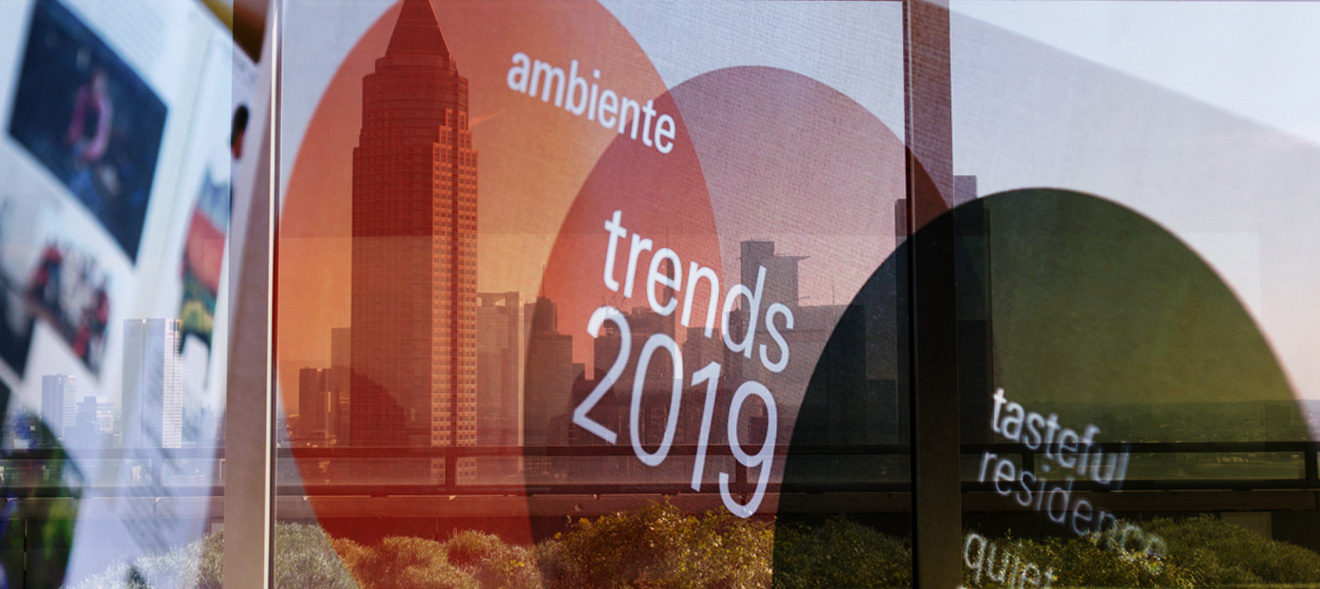
TRENDS ON STAGE
The trend analysis culminates in a special presentation in the Galleria at Ambiente, where trade visitors get an exclusive, behind-the-scenes look at the predicted trends, complete with exhibitor and product information. Currently the hall is flooded with light and we can only guess how the final presentation will look. “Once the products for the three Trend Worlds have been chosen, we’ll get into more detailed planning. That means designing the set for this area,” the experts explain. An interior architect works in parallel with them to design tailor-made podiums, furniture and boards. Graphic wallpaper will be shown on screen as a backdrop, to give the presentation a natural outlook. Ultimately, the viewer should come away with lasting impressions. “We need the right global staging for the various product designs, colour worlds and trend statements.”

What’s it like in the run-up to the special presentation?
Claudia Herke: “We only have nine days to build the whole thing. It’s a bit like a game. Lots of things need to be coordinated on site, both the workers and the overall logistics. The final stage is to arrange products, furniture and material samples in tableaus that capture the right mood. And the finishing touches? Always up to the opening day. We will of course be on site during Ambiente. We conduct guided tours and give talks which are an integral part of the fair.”
How would you sum it up: What will visitors take away from the 2019 trend worlds?
Annetta Palmisano: “The presentation is a quick way of giving visitors a clear picture. You can really tell that everyone is being mindful at the moment, both of themselves and the things around them. We also get a clear impression that they need a quiet retreat from our increasingly mobile world. We’ve made space for natural materials like wool and rattan – a trendy material from this year’s guest country, India. Being close to nature and upcycling will remain strong threads running through our presentation. Yet this does not mean we reject the future, with its many possibilities. All in all, there is no longer a single trend which we can isolate from everything else. Instead, we see several key trends overlapping: there’s one universal idea with different interpretations. It’s really exciting to think about the trends we’ve discovered. We didn’t invent them, we simply found them.”


